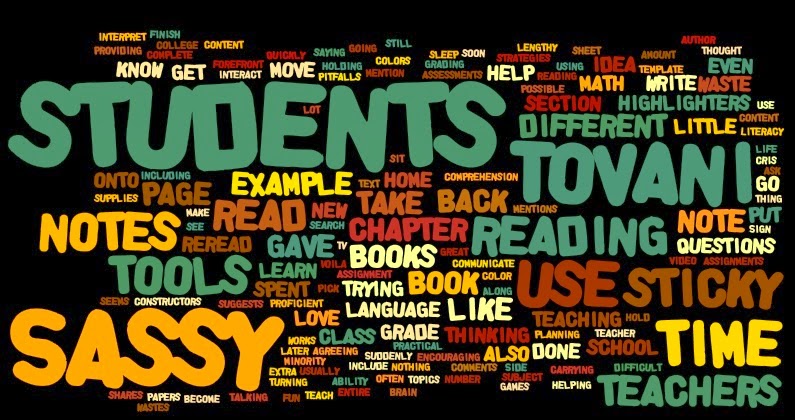Thankfully, I had an extra opportunity to explore this topic when I attended NCTM in New Orleans this past weekend! NCTM is the National Council of Teachers of Mathematics and I received a grant to be able to attend the national conference! I was able to hear from some of the most incredible math teachers in the world and learn from them. And of course I made sure to go to a session on content literacy. Two women who teach high school in Michigan presented about their experience with content literacy.
Unfortunately, these women have had a difficult time trying to convince their state and school that doing a "close reading" does not have to include a large paragraph of text. Instead it can include a set of shapes in which students must highlight or circle different parts of the shapes to show angles and parallel sides. Or it could be a difficult word problem with multiple steps included. There is a way to read something closely, mark it up, and analyze it in a math class. You just have to be prepared to think of it in an entirely new way.
In order to improve daily literacy skills, the women used graphic organizers for notes including vocabulary tables and other visual aids. They even came up with a 3-D rubric in order to more acurately grade their students' understanding of a topic. The students had to write a definition of a word provided and then provide a visual to help explain the definition. The rubric combined a grading of the definition, the visual, and whether the visual and definition matched.
They also provided us with a great list of resources which I hope will also be useful for you!
Books:
Mathematician Reads the Newspaper by John Allen Paulos
Common Core Mathematics in a PLC at Work by NCTM
Articles:
Journal Writing Prompts for Math Students
More Math Journal Prompts
And...More Math Journal Prompts
This conference was such a perfect way to end this class. With an extra burst of exploration in content literacy. I hope to not only continue my growth in this area, but also to implement it into my own classroom very soon!
And as always...
In order to improve daily literacy skills, the women used graphic organizers for notes including vocabulary tables and other visual aids. They even came up with a 3-D rubric in order to more acurately grade their students' understanding of a topic. The students had to write a definition of a word provided and then provide a visual to help explain the definition. The rubric combined a grading of the definition, the visual, and whether the visual and definition matched.
They also provided us with a great list of resources which I hope will also be useful for you!
Books:
Mathematician Reads the Newspaper by John Allen Paulos
Common Core Mathematics in a PLC at Work by NCTM
Articles:
Journal Writing Prompts for Math Students
More Math Journal Prompts
And...More Math Journal Prompts
This conference was such a perfect way to end this class. With an extra burst of exploration in content literacy. I hope to not only continue my growth in this area, but also to implement it into my own classroom very soon!
And as always...
"Content Literacy - the ability of someone to interact with and use strategies to interpret the content of some subject (in its own language) including being able to speak, listen to, read, and write in that language"
{Sassy}











